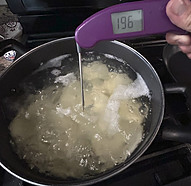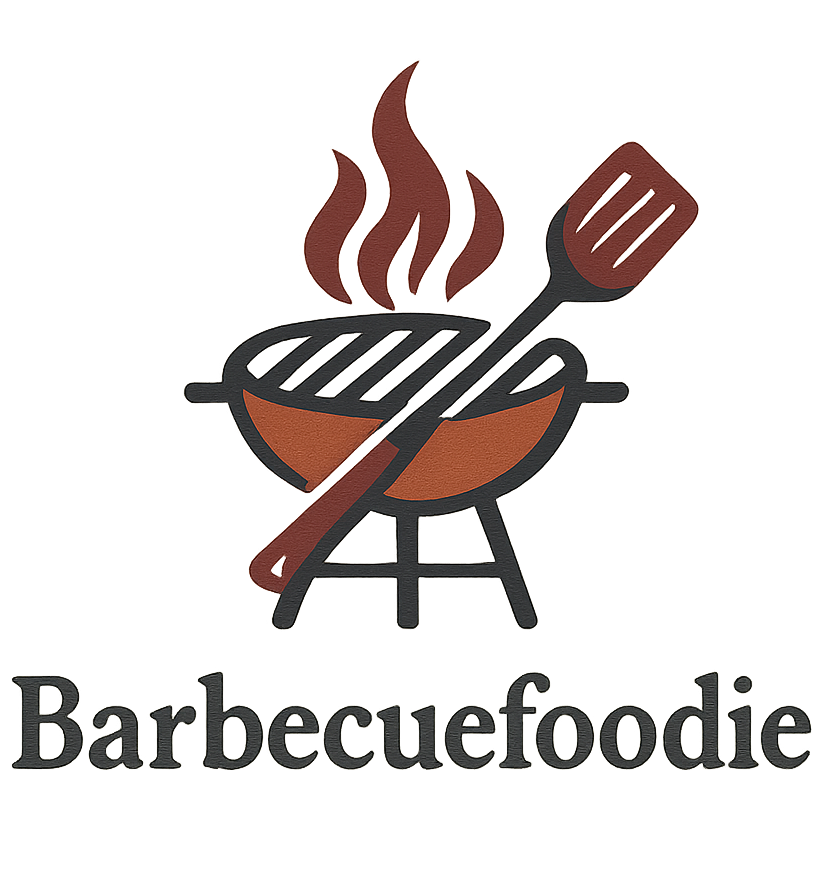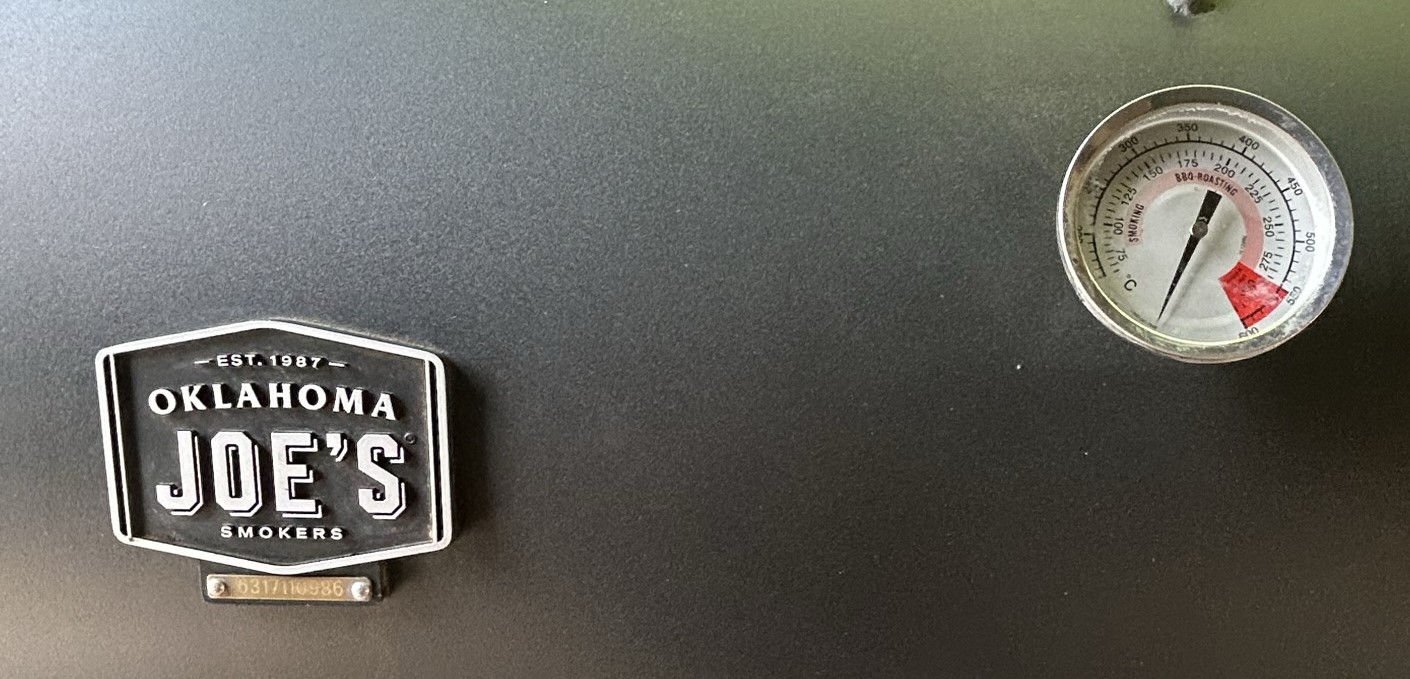Most thermometers in the door or lid of a smoker don’t tell you what the real temperature is inside the smoker. The same goes for most oven thermostats, which won’t keep the oven at the temperature you set.
Whether you’re cooking in an oven, smoker or grill, it’s vital that you know the temperature you’re cooking at. Since you can’t rely on the thermometer in your smoker or the thermostat in your oven, you can run into trouble having food done when expected, or overcook it. In this post I will give you some ideas on how to figure out what the actual temperature is in your oven or smoker.
When I started dabbling into cooking years ago, I ran into quite a few instances where I either overcooked or undercooked the food. For example, one year for Thanksgiving, my wife and I offered to roast the turkey in the oven of our apartment. We set the oven at 350° F, stuck a thermometer in the turkey and put it in the oven at about 1 pm. We were planning to eat around 5 and had calculated a 3hr. cooking time, so we were confident that this would work out just fine.
As you may have guessed, it didn’t. It took until about 7 pm for the turkey to be done and by that time, we and our guests had gone through a lot of snacks. The side dishes had been done for two hours and were now cold, so we had to reheat or microwave them. All of this was, of course, less than ideal.
If you’ve ever experienced a similar scenario, or if you haven’t and don’t want to, read on!
We didn’t realize it at the time, but the likely reason for our trouble is that the oven thermostat wasn’t functioning properly. It didn’t keep the oven at 350° F, but at some lower temperature, thus extending our cooking time by a few hours. Unfortunately, the temperature inside most ovens doesn’t match what you set it to.
In my experience, this can be the case for basic as well as high end ovens. Since our apartment days, we have lived in several houses and one of them had a top-of-the-line range with dual gas ovens. Both ovens were inaccurate, and each by a different number of degrees! In the next paragraph, we will have a look at oven temperature issues and how to check your oven’s accuracy.
How to check oven temperature accuracy
So now that we know that oven thermostats are inaccurate, we need to figure out by how much. You can check the calibration of your oven using a thermometer with a temperature probe. Before calibrating the oven, you need to test this thermometer to make sure it gives you a correct reading. You can do this with a boiling water test or an ice water test.

For the boiling water test, bring water to the boil and insert the thermometer probe into the water for 30 seconds without touching the bottom or sides of the pot. At sea level, the thermometer should read 212°F (100°C) to pass the test. Since the boiling point of water decreases with altitude, you can do an internet search to see what the boiling point is where you are and use that for reference. In this picture I am testing an instant read thermometer at about 8,300 ft elevation where the boiling point is 196°F, and it passed the test. For the ice water test, use ice water instead of boiling water and your thermometer should read 32°F (0°C).
Now let’s have a look at the oven and figure out what the real temperature is. One of the challenges here is that oven thermostats don’t keep the oven at the temperature it’s set to, but instead use a temperature range. If you set your oven to 350 °F, it may turn off at 375 °F and turn back on at 325 °F. This means you have to work with an average temperature, rather than an exact number.
You can measure your oven temperature by attaching the temperature probe to a clip that’s attached to one of the grates. If you don’t have a clip, stick the probe through a potato and put it on the grate inside the oven. Set the thermostat to 350 °F and let the oven heat up, then watch the temperature on your thermometer for about 30 minutes and note the low and the high as it cycles on and off. Now you can determine the average and see by how much your oven deviates from the temperature you set it to.
The number of degrees difference should be the same throughout the temperature range, but you can run the same test at different temperature settings to verify this. Once you are satisfied you know the difference between set and actual temperature for your oven, you can use this number to cook at the right actual temperature inside the oven.
Thermometers at cooking grate level.

Now let’s have a look at grills and smokers, specifically ones that don’t have a thermostat or temperature controller. If your grill or smoker has a temperature controller, you can pretty much treat it like an oven and run the test described above.
The first thing to check is if the smoker temperature gauge gives the correct temperature reading with the boiling water or ice water test. This is hard to do, unless you can remove it from the grill. It also has limited value, since there usually is another issue with these thermometers.
The thermometer on most grills and smokers is located somewhere in the upper part of the lid, which is quite a distance away from the food on the cooking grate. On my offset smoker the temperature at grate level is substantially lower than the reading on the lid of the cooking chamber.
One way to deal with this is to install a thermometer at a lower position in the lid of the cooking chamber. The best placement depends on your smoker and an online search will likely give you some ideas on what’s best in your situation.
Hot and cold spots
You have probably noticed that food cooks faster at certain locations of the cooking grate than others. This can be caused by burners that are clogged with food or corroded, or issues with flavor bars of some gas grills. However, even brand-new grills usually have some hot spots, especially the ones with a bigger cooking area.
When you’re grilling, the best way to handle this is to keep an eye on the food, rotate it from hot to cold spots and pull items that are fully cooked off the grill to prevent overcooking. Over time you will learn where the hot spots are, and this will become easier to do.
For smokers, it’s harder to manage this since it takes longer to identify the hot spots on the cooking grate. The solution to this problem is described in the next section.
Temperature probe at cooking grate level

Over the years I’ve found that with all the variables discussed here, it’s a challenge to know what temperature the food you’re cooking is exposed to. And we haven’t even talked about ambient factors when cooking outside, like wind and outdoor temperature.
In my experience, the best way to determine the temperature at the cooking grate is to place a probe next to the food with a grate clip (or potato). This will give you the temperature that the food is exposed to, and it also allows you to put the probe in different locations to find out if there are any hot spots.
When I have a lot of food on my smoker, I use multiple probes on the grate to monitor the temperature, so I don’t have to open the lid to move a probe around the cooking grate. With this set up, I don’t even look at the thermometer in the lid and rely on the reading from the probes.
Conclusion
Once again, the best way to know and manage the cooking temperature in your oven, grill or smoker is to have one or more probes at grate level close to the food. As with anything, there’s more than one way to do this and I hope this post has some ideas you can use.
If you have used any other methods or have questions about measuring and managing temperature in your equipment, let me know and I will do my best to help you out!
For additional general information on barbecue, have a look at my Barbecue Basics for Everyone page.
Thanks for visiting my site and talk to you soon,
Herman

